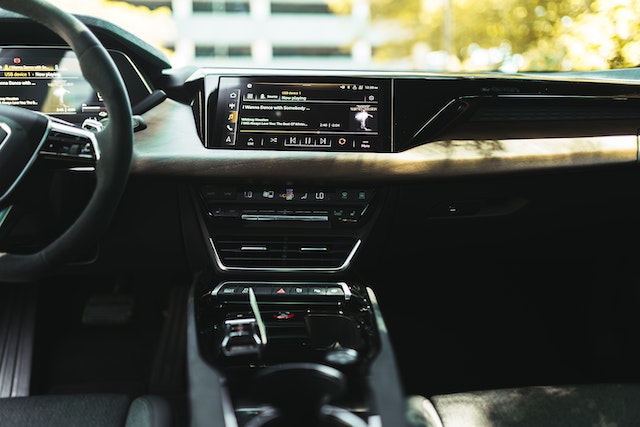While listening to music on your way to work, you might wonder why it is necessary to upgrade the stereo. After all, there’s nothing wrong with your car audio. But, it would help if you considered the many benefits of upgrading your in-car stereo system.

Whether your automobile is relatively new, equipped with high-quality speakers from the factory, or if your car’s original speakers show signs of wear, you can upgrade it to aftermarket models. Car audio Singapore best suits your vehicle’s needs by providing the perfect system.
What Is a Car Stereo?
Many components that form your vehicle’s audio system are called the “car stereo.”
These component pieces comprise the source that allows for selecting information like AM/FM audio system, the preamp, which is responsible for making sound adjustments, and the amplifier boosts the audio signals provided by the preamp.
Upgrading Car Speakers: Quality vs Quantity
The primary reason against upgrading your vehicle audio is the price. The excellent quality will increase with an upgrade to component speakers, although they can be costly. However, direct replacement aftermarket speakers are a terrific option to improve sound quality without breaking the bank.
If you upgrade your car’s audio system, the factory speakers are the first. When upgrading to a high-end head unit and amplifier, it’s common to find that the factory speakers need to be up to snuff.
If that’s the case, it’s best to avoid using direct-replacement speakers. Swapping out the stock speakers for high-quality component speakers and adding a subwoofer is the most significant way to maximise the potential of your new custom car sound system.
Component speakers are rugged to better, even though aftermarket speakers typically increase quality over a stock system.
Upgrading Factory Speakers on a Budget
To get the finest possible sound from your factory sound system without spending a fortune, upgrading the speakers is an excellent place to begin. As a fancy way of explaining that most OEM systems use speakers with a single driver that can reproduce the complete or vast majority of the audible spectrum, “full-range” is the term most commonly used.
There is a dramatic improvement in sound quality when switching from full-range automobile speakers to two-way or three-way speakers with numerous drivers or separate component speakers. Full-range speakers are advantageous since they are space-saving and less expensive than multiple-component speakers. On the other hand, you may pay more for muddy audio quality elsewhere.
High-end aftermarket speakers are typically better designed and made with superior components than stock speakers. Speaker surrounds degrade sound quality as they age. The foam and paper used in most OEM speaker surround deteriorate over time, limiting the speakers’ performance. Rubber surrounds are commonly used in aftermarket speakers since they are long-lasting and help to provide better bass.
Similar to the rest of the device, the cones in aftermarket versions tend to be more solid. This is another reason why a high-quality aftermarket speaker can usually reproduce bass more accurately than a factory speaker of the same size. Therefore, if you need more funds to invest in high-quality, two- or three-way speakers, upgrading to new factory speakers is the next best thing.
Constructing an Audio System for a Car Starting from Scratch
Many audiophiles feel that more than upgrading their factory speakers is needed to make up for an underpowered head unit or amplifier, so they opt to build a new system from the ground up instead. If this is the case, it is necessary to replace the factory speakers, which are of poor quality, with aftermarket speakers, which are of much higher quality.

Component speakers are superior to full-range speakers in terms of sound quality and their ability to reproduce higher and lower frequencies. Two-way and three-way speakers produce a sound that is superior to full-range speakers. This arrangement gives you an advantage over competing for car audio systems since it enables you to select a head unit and amp tailored to your specific speaker layout.
It is more complicated to replace the factory car speakers in your vehicle with actual woofers and tweeters than to drop in some two or three-way speakers. Doing so enables you to create a soundscape explicitly tailored to your car.
Will the New Speakers Fit in the Car?
When upgrading from factory car speakers to component speakers, one of the most common obstacles is finding enough space for the new speakers and figuring out how to instal them properly. If you want to replace four coaxial speakers, for instance, with a combination of left, right, and rear-channel woofer, tweeter, and mid-range component speakers, you won’t be able to drop the new speakers into the enclosures that were designed for the factory units. Instead, you will need to purchase new sections.
Even if you use aftermarket coaxial speakers, space may still need to be fixed. If you buy replacement speakers with the exact dimensions, you can get away with it, but you may need some help.
It is vital to check a fit guide before upgrading your car speakers because specific models incur a large amount of tweeter protrusion beyond the essential mounting height. For instance, a standard speaker size is 6 inches long by 9 inches in width. Because various 6-by-9 speakers have varying depths, some units may only work in some applications. These are a few of the reasons why it is crucial to replace your car speakers.
Final Thoughts
Because most factory car stereos do not include amplifiers, aftermarket car stereos can generate a superior sound quality—this is the primary reason for this. The modern technology used in audio circuits produces clear and rich sounds, allowing for greater control and finer tuning.
The time has come to incorporate extra features. Upgraded audio can provide you with increased connectivity and entertainment, even on a limited financial budget.





